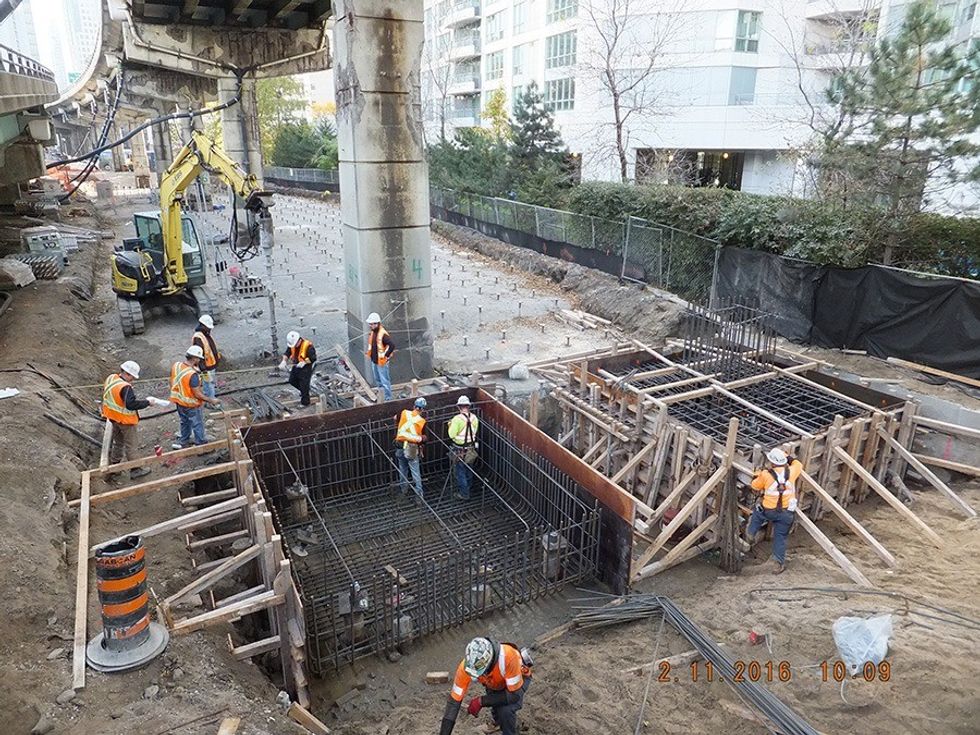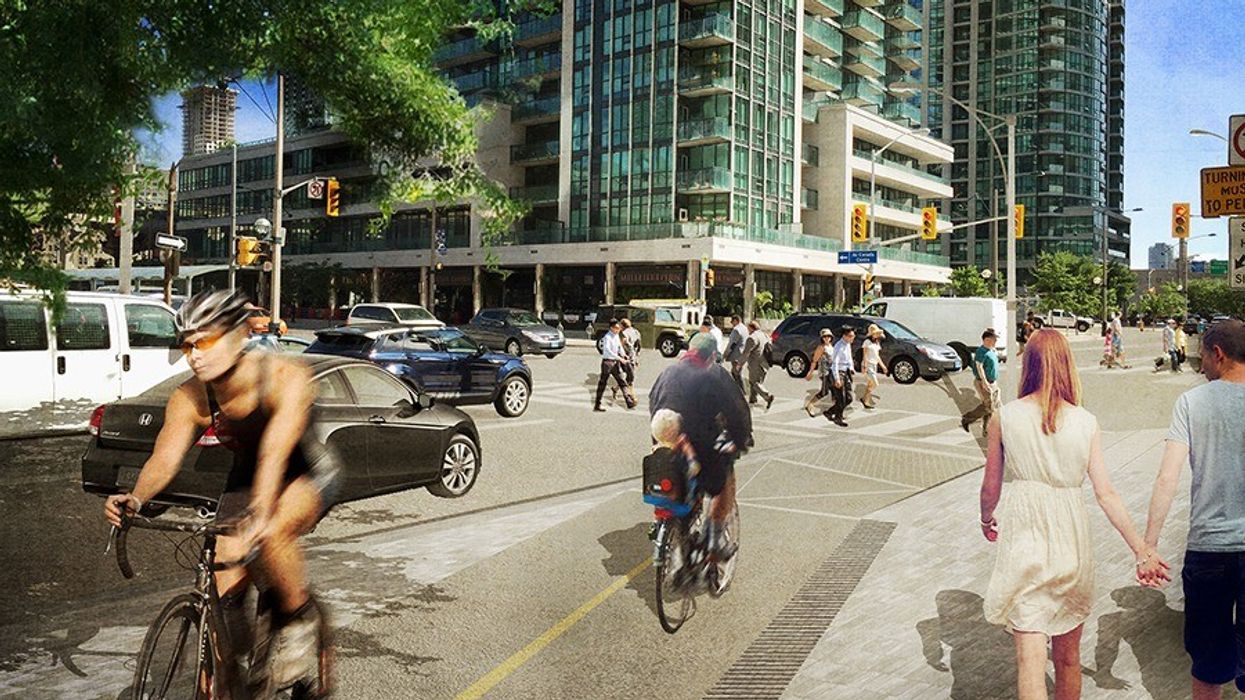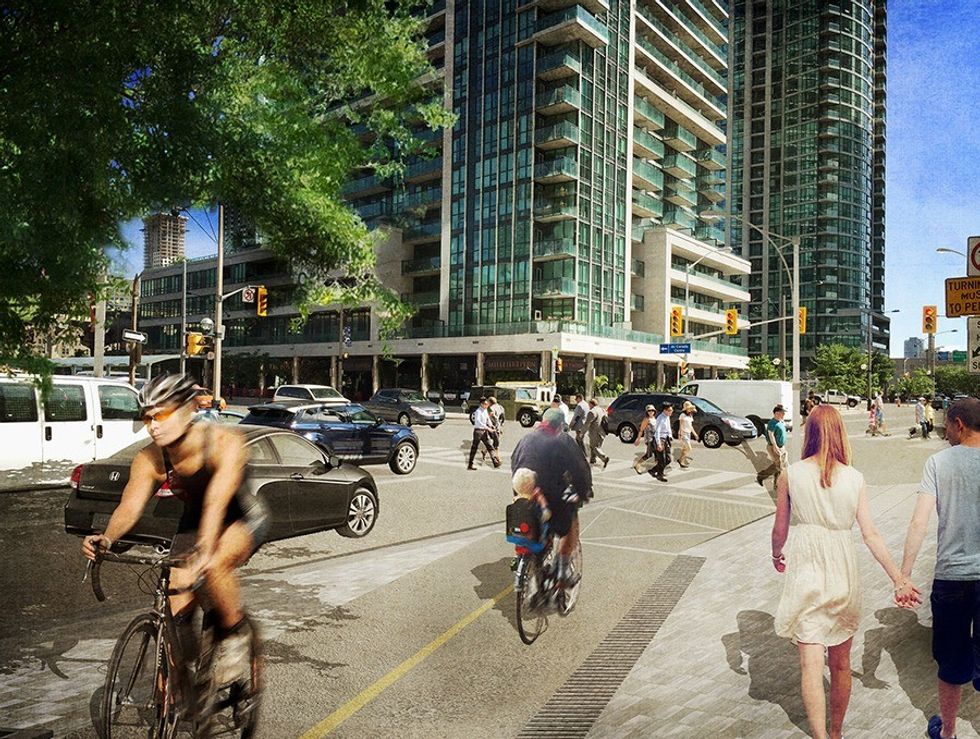
Nowhere is the reclamation of Toronto unfolding more dramatically than on the waterfront.
Whole swaths of what was long a neglected industrial wasteland are now being remade as a series of live/work/play destinations that have already brought new life and thousands of residents and visitors to the new district.
Next up is the York-Bay-Yonge off-ramp from the eastbound Gardiner Expressway. It is now being demolished and will be replaced by a shorter, steeper exit-ramp that will touch down at Lower Simcoe Street.
That will open up a long stretch of Harbour Street, which connected the old off-ramp to Bay Street, and farther east, Yonge, to be widened from three lanes to four and transformed into a more urban artery lined with condos and trees. That will also mean wider sidewalks and space on the road for bikes.
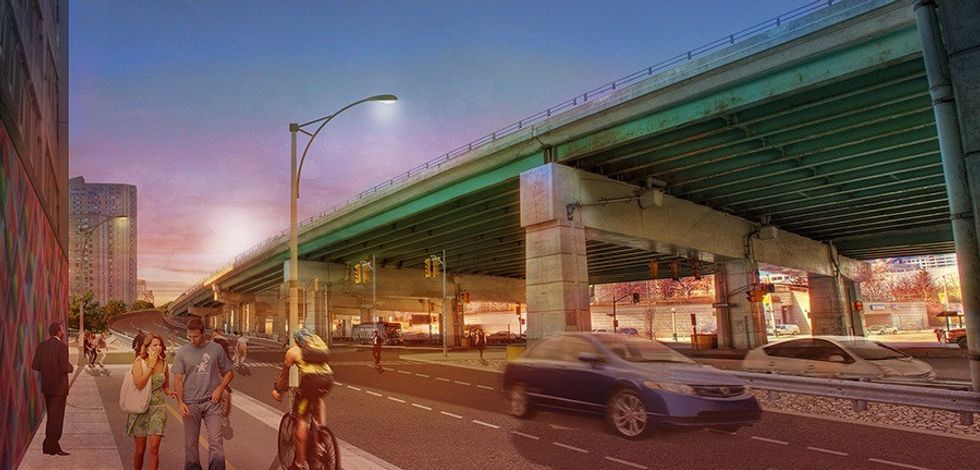
The green space defined by the circular off-ramp that exited at York will be expanded, opened up and handed over to the city's parks department to be redesigned and turned into a real park.
Unsurprisingly, the disappearance of the original off-ramp, which handles 3,300 cars daily, has been greeted with less than universal joy.
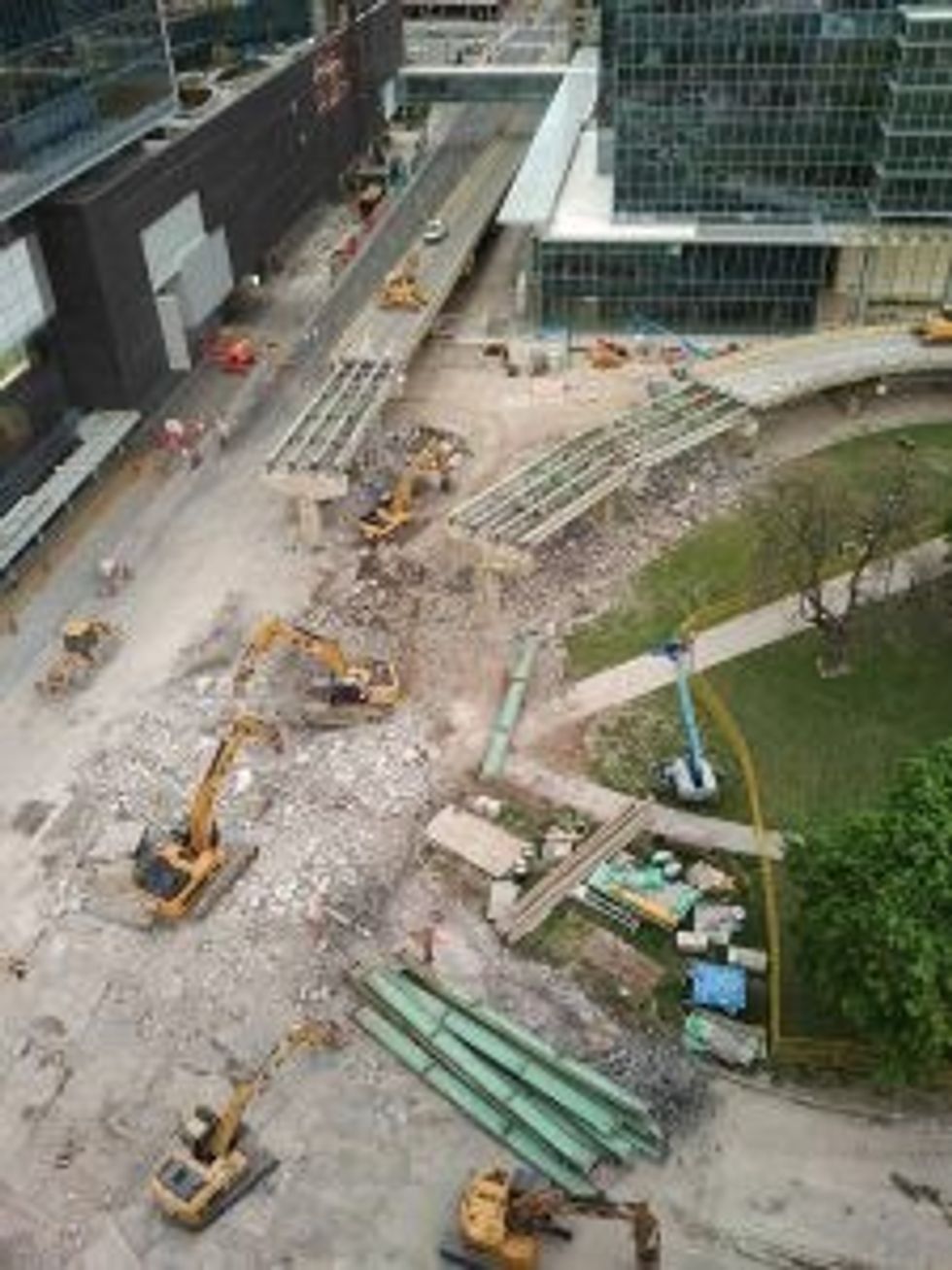
Media coverage has focused largely on the inconvenience drivers have experienced since it closed permanently last April.
Though the Gardiner dates from a time when official Toronto gave little thought to its waterfront and was quite happy to sacrifice the city on the altar of the automobile, in the eyes of many, including Mayor John Tory, it remains a critical piece of Toronto's transportation infrastructure.
Indeed, just last year city council rejected a staff recommendation to tear down the east end of the expressway and decided instead to spend $1.5 billion to rebuild it bigger than ever.
This only makes the removal of the off-ramp that much more remarkable. For once, the city managed to put the needs of local residents and pedestrians ahead of drivers. Whether this change of thinking is a one-off remains to be seen, but certainly it comes as welcome acknowledgment of waterfront revitalization.
The new South Core neighbourhood, which extends west of York, south of the railway tracks, has brought the Financial District and much of lower downtown closer to the water's edge. In effect, the off-ramp demolition is the city catching up with the new mixed-use reality of the central waterfront.
Below, say, Front Street, the morning and evening rush hours now move both north and south. But residents face a pedestrian infrastructure built at a time when virtually no one walked in this part of the city. That has been changing since the advent of Harbourfront in the late 1970s, but in the last couple of decades, the transformation has been profound.
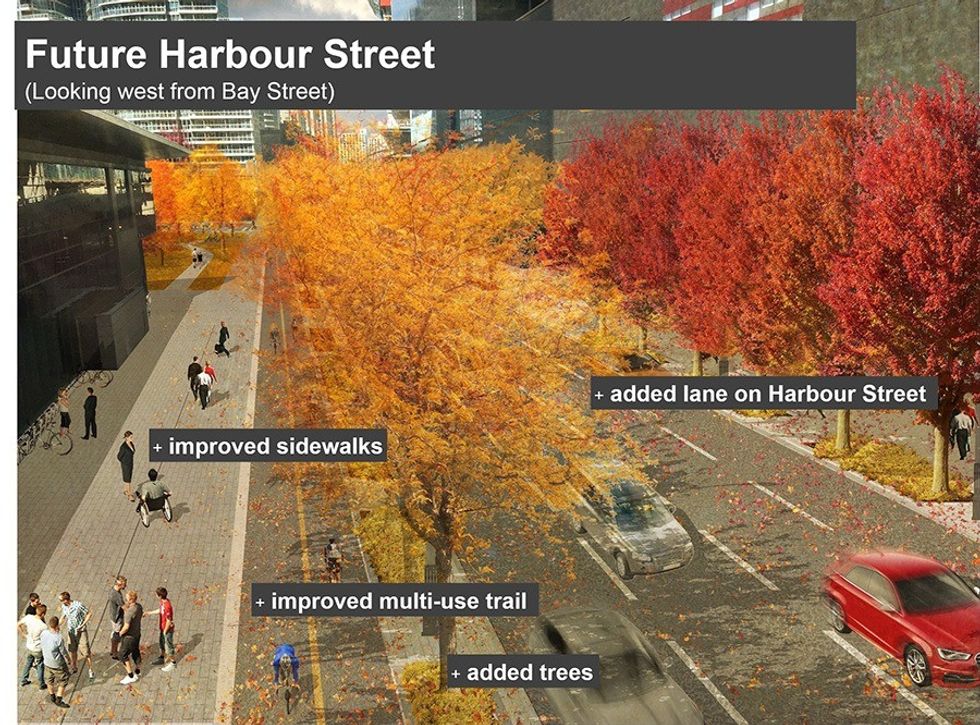
A good example is Harbour Street, now lined with condos from Yonge west to York and even beyond. In other words, thousands of people — and their kids and dogs — live in buildings that face onto what has been an exit from a major highway.
This sort of contradiction of intentions and uses typifies a city, like Toronto, in transition. Artists' renderings show parents wandering along the soon-to-be-urbanized Harbour Street with baby strollers as cyclists ride by. Areas consigned by the Gardiner to permanent darkness have been liberated from shadow and views restored.
City brought back to life
The effect is nothing less than amazing; it's as if whole sections of Toronto have been reconnected to the larger city brought back to life.
Most dramatic, perhaps, is the southeast corner of York and Lake Shore Blvd., where a new park will take shape in the years ahead. But already with the elevated road gone, space hidden beneath the Gardiner has been revealed for the first time in decades. It isn't large, but the possibilities are endless, even transformative.
By the time the dust settles — work is scheduled to be completed by January 2018 — the off-ramp will not only have been replaced, it will have been forgotten. Then the only question about the waterfront neighbourhood's new infrastructure will be why it took so long.
